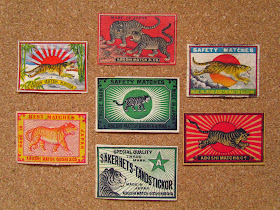Guess which one is the Chinese....
▼
Sunday, December 29, 2013
Thursday, December 26, 2013
Wednesday, December 25, 2013
Monday, December 23, 2013
Some funny Japanese Ads Labels of the Post WW2 times
 |
| Do you need another swab? |
 |
| Does sombody can help me work this Records player? |
 |
| What are they doing there...? |
 |
| The one leg stripper |
 |
| Help! She is falling on me! |
 |
| I am watching you! |
 |
| I don't like your spiky nose... |
 |
| Smile, you are Candid Camera |
 |
| The kan kan dancers with only one long hand |
 |
| The blood Drinker |
 |
| The Strip Waitress |
 |
| The ABC of love |
 |
| The world is so funny |
Friday, December 13, 2013
2 special labels that I looked for a long long time, so finally I have them !!!
 |
| A very interesting way to ride a horse... |
 |
| General Kuroki Tamemoto |
Count Tamemoto Kuroki GCMG (May 3, 1844 – February 3, 1923)
was a general in the Imperial Japanese Army. He was the head of the Japanese First Army during the Russo-Japanese War; and his forces enjoyed a series of successes during the Manchurian fighting at the Battle of Yalu River, the Battle of Liaoyang, the Battle of Shaho and the Battle of Mukden.
was a general in the Imperial Japanese Army. He was the head of the Japanese First Army during the Russo-Japanese War; and his forces enjoyed a series of successes during the Manchurian fighting at the Battle of Yalu River, the Battle of Liaoyang, the Battle of Shaho and the Battle of Mukden.
Wednesday, December 11, 2013
Tuesday, December 10, 2013
Just another beautiful and artistic Japanese label with a happy story, to celebrate the 600th post in my blog
Listen to a happy story
One day the mice went sailing.
Suddenly the tree on which they were standing, was drifting in the river (Help! Help!!!)
The mice could not get to the shore.
Suddenly, the good old frog saw that they got into trouble,
and helped them reach the shore.
And since they live happily ever after!
Was it a happy story?
Monday, December 9, 2013
Friday, December 6, 2013
Wednesday, December 4, 2013
A rare and very interesting matchbox skillet produced by GEVURA match factory, Tel-Aviv, Palestine (Israel pre-1948), seen on eBay auction few monthes ago
GEVURA match factory - was established in 1922 by the Oxhorn - Diskin families and operated until 1928, then it was sold to SCH Kavlin, a Swedish company.
Monday, December 2, 2013
A matchbox label made in Occupied Japan
Occupation of Japan
From Wikipedia, the free encyclopedia
At the end of World War II, Japan was occupied by the Allied
Powers, led by the United States with a contribution from the British
Commonwealth. This foreign presence marked the first time in its history that
the island nation had been occupied by a foreign power. The occupation
transformed Japan into a democracy modeled somewhat after the American New
Deal.
The San Francisco Peace Treaty signed on September 8, 1951
marked the end of the Allied occupation, and after it came into force on April
28, 1952, Japan was once again an independent country, save for the Ryukyu
Islands.
Made in Occupied Japan was printed on pottery, porcelain, toys, and
other goods made during the American occupation of Japan after World War II,
from 1947 to 1952. Collectors now search for these pieces. The items were made
for export.
Sunday, December 1, 2013
The Chinese chess - xiangqi
Chinese chess - Xiangqi
Xiangqi (Chinese: 象棋, p Xiàngqí), sometimes called Chinese chess, is a strategy board game for two players. It is one of the most popular board games in China, and is in the same family as "Western" (or "international") chess, chaturanga, shogi, Indian chess and janggi. Besides China and areas with significant ethnic Chinese communities, xiangqi (cờ tướng) is also a popular pastime in Vietnam.
The game represents a battle
between two armies, with the object of capturing the enemy's general (king).
Distinctive features of xiangqi include the cannon (pao), which must jump to
capture; a rule prohibiting the generals from facing each other directly; areas
on the board called the river and palace, which restrict the movement of some
pieces (but enhance that of others); and placement of the pieces on the
intersections of the board lines, rather than within the squares.
From Wikipedia, the free encyclopedia

















q3In+rw~~60_57.jpg)











Ef3w~~60_12.jpg)
UE9s3wCPIsBSBy51B-S!~~60_12.jpg)






